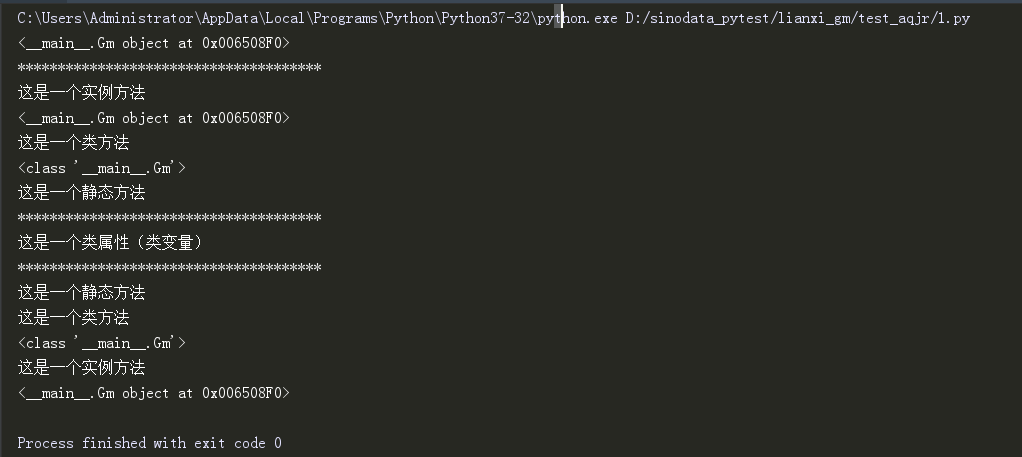Python----函数、类的定义、封装及调用
'''
封装:
把乱七八糟的数据扔进列表里面,这是数据层面的封装
把常用的代码段打包成一个函数,这是语句层面的封装
把数据和代码打包成一个对象,这也是封装
对象的特征称为“属性”,对象的行为称为“方法”,即: 对象 = 属性 + 方法
从代码层面看,“属性”就是变量,“方法”就是函数,将定义的这些称为类(class)
对象叫做这个类的一个实例(instance),也叫实例对象(instance object)
'''
# 类名约定用大写字母开头,含 class 表明定义一个类
class Gm():
str = "这是一个类属性(类变量)"
# 函数名用小写字母开头,含 def 表明定义一个函数
def instancefunc(self):
print("这是一个实例方法")
print(self)
@classmethod # 该装饰器用来标识为类方法,可以访问类属性
def classfunc(cls): # 第一个参数必须是类对象(cls.)
print("这是一个类方法")
print(cls)
@staticmethod # 该装饰器用来标识为静态方法,不可以访问类属性
def staticfunc(): # 形参没有 self 或 cls
print("这是一个静态方法")
# Gm1(继承类)是子类,Gm(被继承的类)是基类、父类或超类。
# 一个子类可以继承分类的任何属性和方法。
# 若子类中定义与父类同名的方法或属性,则会自动覆盖父类对应的方法或属性
class Gm1(Gm):
pass
# 调用
test = Gm() # 初始化一个Gm的对象(创建一个Gm对象),即test是Gm的实例对象
print(test)
print("**************************************")
test.instancefunc() # 对象调用实例方法
test.classfunc() # 对象调用类方法
test.staticfunc() # 对象调用静态方法
print("**************************************")
print(test.str)
print("**************************************")
Gm.staticfunc() # 类调用静态方法
Gm.classfunc() # 类调用类方法
Gm.instancefunc(test) # 类调用实例方法,需要带参数

实例方法:
class Gm():
str = "这是一个类属性(类变量)"
def __init__(self, st):
self.st = st
def instancefunc(self):
print("这是一个实例方法")
print(Gm.str)
print(self.st)
print(self.str)
print(self)
if __name__ == '__main__':
test = Gm("abc")
print(test)
print(test.str)
print(test.st)
test.instancefunc()




